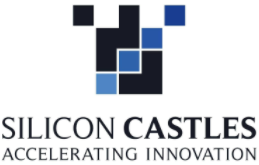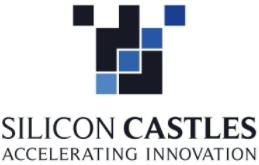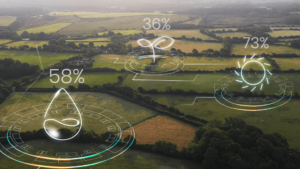Navigating the intricate landscape of multilingual communication, especially in the diverse setting of the European Union, which boasts 24 official languages, presents unique challenges and opportunities in the realm of artificial intelligence. This realm, as many of us already know, has been at the centre of attention as we await the finalization of the EU AI Act, which will set the stage for the EU to implement a law on AI.
Language and communication are set to play a significant role, as the Act will apply to both public and private entities within and outside Europe. This applies if the AI system is either introduced into the EU market or impacts individuals in the EU. The Act will affect not only AI developers but also vendors who utilize but do not personally develop, AI systems.
As we navigate this complex landscape, we have invited Daniela Braga, founder and CEO of Defined.ai, to shed light on the innovative solutions and emerging trends in this field. Defined.ai, known for its groundbreaking work in AI technology, has recently launched DIANA, a multilingual AI voice assistant adept at understanding both English and Portuguese – a significant leap in tackling the multilingual nuances within Europe.
Join us in this exclusive interview, as we explore the intricacies of multilingual communication in Europe, the innovative strides taken by Defined.ai, and her insights which not only offer a window into the rapidly evolving world of AI in Europe but also contrast them with the pace of AI development in the United States.
Could you walk us through what is DIANA, and what sets it apart from other AI technologies currently available in the market?
DIANA stands out as the first conversational AI agent that comprehends both English and Portuguese. This capability is made possible through a unique technology called code-switching, a feature not yet mastered by major tech giants like Apple or Google. This is particularly relevant in Europe, where multilingualism is common, and conversational AI systems often struggle to keep up with the seamless language transitions common among European citizens.
How has DefinedAI specifically addressed the challenge of multilingual communication in Europe?
Our strength lies in our deep understanding of data and technology fine-tuning. Unlike many big tech companies that rely on existing AI models, we specialize in customizing every aspect of our conversational AI model. This model comprises components like speech recognition, natural language understanding, dialogue management, natural language generation, text-to-speech, and a visual avatar. Although not everybody needs a visual avatar, it is a humanized element towards some users. We’ve applied this expertise in a project with the Agência Modernização Administrativa in Portugal (AMA), involving a complex authentication process for citizens.
What challenges did you encounter in the integration of this technology?
The most significant challenge lies in integration because there is a lot of technical development required to integrate with existing libraries and legacy services. Big companies and organizations are not set up for microservices; they cannot work in isolation. So, that is the biggest challenge, but there’s also the aspect of fine-tuning the language model for this specific use case, one that works with every citizen. And this is what we’ve been doing for our customers and ourselves.
Looking forward, how do you see the development of conversational tools and other technologies progressing in the next few years?
I envision a future where the world is voice-enabled; essentially, there will be nothing we do that won’t involve voice activation through natural language processing. This means you’ll be able to interact using your voice, regardless of the medium or channel you’re using – be it WhatsApp, social media, phone, or any other platform.
I also believe that traditional screens will become less preferred. The interaction will shift more towards wearables and screenless devices. Imagine wearables like the latest Ray-Bans, where you can speak to your glasses, and they respond. Currently, this is in the realm of augmented reality, but soon it will evolve into mixed reality. You’ll be able to project a virtual screen through your lenses to search for information and explore further. The key point is that everything will be voice-enabled, transforming the way we interact with technology.
With DefinedAI also operating in the US, how do you compare the pace of AI development between the US and Europe, and what direction should Europe take?
I have been discussing the varying speeds of AI development since 2000, long before the pandemic. Back then, I pointed out that Europe was 10 years and 10 billion euros per year behind in AI development, and unfortunately, not much has changed since. Over the past three years, as the EU began drafting regulations, the USA initiated a substantial 100 billion dollar fund for AI investment.
The EU is now focusing on regulation, primarily emphasizing the risks of AI, restricting its applications, and imposing heavy fines, rather than encouraging development. The USA, while starting later with regulation, had already established a strong tradition in AI development over the past two decades, supported by a robust ecosystem and decisive investments. In the summer of 2022, the USA introduced an AI Bill of Rights, originating from a task force I was part of. This led to another task force for generative AI, which began in August, culminating in a recently announced executive order. This executive order presents a broader framework than the EU Act, covering civil rights, civil liberties, and social impact.
Do you believe the EU Commission has a more penalizing approach towards AI regulation compared to the US?
I believe the EU is now observing the US executive order’s approach to AI, which is broader and more of a tangible framework compared to the EU’s strategy. For example, the EU Act mentions watermarks for generative content, which should be clear. In contrast, in the US, such initiatives are supported by NIST (National Institute of Standards and Technology), an organization that has been setting standards in various fields across the United States for decades. These standards laid out by NIST are likely to become the basis for certifications. While the EU is somewhat behind in this aspect, I do see a beneficial exchange of ideas and learning happening between both sides of the Atlantic.
Given the rapid advancement in AI in the United States, what do you think Europe needs to do to accelerate its progress?
We need to identify and focus on three to five key areas for investment and commit more boldly to them. It’s essential to be more daring in our investments. While it’s impossible to excel in every domain, in a field as pervasive as AI, which is now impacting every industry much like the internet did, we risk perpetual dependence on foreign technology if we don’t take decisive action immediately.
- SEO Powered Content & PR Distribution. Get Amplified Today.
- PlatoData.Network Vertical Generative Ai. Empower Yourself. Access Here.
- PlatoAiStream. Web3 Intelligence. Knowledge Amplified. Access Here.
- PlatoESG. Carbon, CleanTech, Energy, Environment, Solar, Waste Management. Access Here.
- PlatoHealth. Biotech and Clinical Trials Intelligence. Access Here.
- Source: https://www.eu-startups.com/2024/02/addressing-multilingual-ai-communication-in-europe-interview-with-defined-ai-founder-and-ceo-daniela-braga/
- :has
- :is
- :not
- :where
- $UP
- 10
- 100
- 2000
- 2022
- 24
- a
- Able
- accelerate
- across
- Act
- Action
- Activation
- addressed
- addressing
- adept
- advancement
- Advertisement
- affect
- Agent
- AI
- AI Act
- AI models
- AI regulation
- AI systems
- AI Voice Assistant
- already
- also
- Although
- AMA
- among
- an
- and
- announced
- Another
- any
- apart
- Apple
- applications
- applied
- applies
- Apply
- approach
- ARE
- areas
- artificial
- artificial intelligence
- AS
- aspect
- Assistant
- At
- attention
- augmented
- Augmented Reality
- AUGUST
- Authentication
- available
- avatar
- await
- back
- basis
- BE
- because
- become
- been
- before
- began
- behind
- believe
- beneficial
- between
- Big
- big tech
- Big Tech Companies
- Biggest
- Bill
- Billion
- boasts
- both
- Both Sides
- broader
- but
- by
- called
- CAN
- cannot
- capability
- case
- centre
- ceo
- certifications
- challenge
- challenges
- changed
- Channel
- citizen
- Citizens
- civil
- civil liberties
- Civil Rights
- clear
- commission
- commit
- Common
- Communication
- Companies
- compare
- compared
- complex
- components
- comprehends
- comprises
- content
- contrast
- conversational
- conversational AI
- covering
- culminating
- Currently
- Customers
- data
- decades
- decisive
- deep
- defined
- dependence
- develop
- developers
- Development
- Devices
- dialogue
- DID
- direction
- discussing
- diverse
- do
- doing
- Dollar
- domain
- Dont
- ecosystem
- either
- element
- emerging
- emphasizing
- encounter
- encouraging
- English
- entities
- envision
- especially
- essential
- essentially
- established
- EU
- Europe
- European
- european union
- Euros
- Every
- everybody
- everything
- evolve
- evolving
- example
- Excel
- exchange
- Exclusive
- executive
- executive order
- existing
- expertise
- explore
- Feature
- few
- field
- Fields
- finalization
- fines
- First
- five
- Focus
- focusing
- For
- Force
- foreign
- Forward
- founder
- Founder and CEO
- Framework
- from
- fund
- further
- future
- generation
- generative
- Generative AI
- giants
- glasses
- groundbreaking
- had
- Happening
- Have
- heavy
- her
- How
- HTTPS
- i
- ideas
- identify
- if
- imagine
- immediately
- Impact
- impacting
- Impacts
- implement
- imposing
- impossible
- in
- individuals
- industry
- information
- initiated
- initiatives
- innovative
- insights
- Institute
- integrate
- integration
- Intelligence
- interact
- interaction
- Internet
- Interview
- into
- intricacies
- intricate
- introduced
- investment
- Investments
- invited
- involve
- involving
- isolation
- IT
- ITS
- Keep
- Key
- Key Areas
- Know
- known
- laid
- landscape
- language
- Languages
- later
- latest
- launched
- Law
- Leap
- learning
- Led
- Legacy
- lenses
- less
- libraries
- lies
- light
- like
- likely
- Long
- Lot
- made
- major
- management
- many
- Market
- means
- Media
- medium
- mentions
- microservices
- mixed
- mixed reality
- model
- models
- more
- most
- much
- National
- Natural
- Natural Language
- Natural Language Generation
- Natural Language Processing
- Natural Language Understanding
- Navigate
- Need
- needs
- next
- nist
- nothing
- now
- nuances
- of
- offer
- official
- often
- on
- ONE
- only
- operating
- opportunities
- or
- order
- organization
- organizations
- originating
- Other
- our
- ourselves
- out
- outside
- over
- Pace
- pandemic
- part
- particularly
- past
- per
- Perpetual
- Personally
- phone
- platform
- plato
- Plato Data Intelligence
- PlatoData
- Play
- Point
- Portugal
- Portuguese
- possible
- preferred
- presents
- primarily
- private
- process
- processing
- Progress
- progressing
- project
- Project A
- public
- rapid
- rapidly
- rather
- Reality
- realm
- recently
- recognition
- Regardless
- Regulation
- regulations
- relevant
- rely
- required
- Respond
- restricting
- rights
- Risk
- risks
- robust
- Role
- Screen
- screens
- seamless
- Search
- see
- Services
- set
- Sets
- setting
- shed
- shift
- should
- Sides
- significant
- since
- So
- Social
- Social impact
- social media
- Solutions
- some
- somewhat
- Soon
- speak
- specialize
- specific
- specifically
- speech
- Speech Recognition
- speeds
- Stage
- standards
- stands
- Starting
- States
- Strategy
- strength
- strides
- strong
- Struggle
- substantial
- such
- summer
- Supported
- system
- Systems
- tackling
- Take
- taken
- tangible
- Task
- task force
- tech
- tech companies
- tech giants
- Technical
- Technologies
- Technology
- Text-to-Speech
- than
- that
- The
- the world
- Them
- then
- There.
- These
- they
- think
- this
- three
- Through
- to
- tools
- towards
- tradition
- traditional
- transforming
- transitions
- Trends
- two
- understanding
- unfortunately
- union
- unique
- United
- United States
- unlike
- us
- USA
- use
- use case
- users
- using
- utilize
- various
- varying
- vendors
- Virtual
- visual
- Voice
- Voice Assistant
- walk
- was
- watermarks
- Way..
- we
- wearables
- What
- What is
- which
- while
- WHO
- will
- window
- with
- within
- Work
- works
- world
- year
- years
- yet
- you
- Your
- zephyrnet













